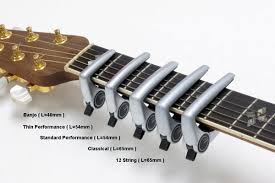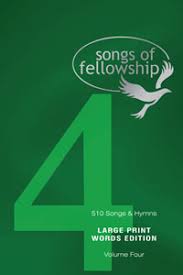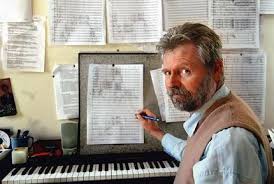Thursday, December 2, 2010
Recommended Reading!
Friday, November 19, 2010
Squirrel!
Wednesday, November 17, 2010
Thursday, November 4, 2010
Worship Leader Magazine - Your Comments Please!

Commercialisation or helpful resource for gospel-centred ministry? Real church, or glossy-paged, celebrity-worshipping quasi-Christian subculture?
Wednesday, November 3, 2010
O Holy Night - ou est-il?

O Holy Night is one of the best loved Christmas carols of the last 150 years. I currently have a beautiful version by Kerrie Roberts on my iTunes, and it has been covered by everyone from Mariah Carey to Andrea Bocelli.
Friday, October 22, 2010
Leading Songs

Too easily our song leading in church can become mechanical. The service leader announces the next song, the musicians play the intro, the singing starts the singing ends, and then the service moves on. Box ticked.
- Because we worship in song in response to God's revelation of himself in his Word, the leader should 'lead' the gathered church into the song from God's Word.
- The musical introduction should be part of the journey, setting the appropriate feel and atmosphere, as well as leading into the song musically. Think about the length, musical complexity, and instruments involved in order to do this.
- Mean the words we sing! Communicate this to the gathered church in our facial expressions and body language as we lead.
- Grasp the opportunity provided by musical interludes in songs to reflect on what you're singing, and enjoy praising God.
- Lead out of the song appropriately. Ensure that you put it down gently, and don't drop it! Note that you can even drop an uptempo rocker - you need to bring it to good end in order to move on in the flow of the service.
- After the song, leave space to breathe before moving on in the service.
- Perhaps it is appropriate to pray to God about something the song has raised.
Thursday, July 15, 2010
"I Don't Do the Singing"

Monday, June 28, 2010
Sound Ministry Series Part 8 - The AUX buses
Sound Ministry Series Part 7 - A Final Word on EQ
Friday, June 25, 2010
Sound Ministry Series Part 6 - The Low Frequency EQ Knob
Wednesday, June 2, 2010
Sound Ministry Series Part 5 - The Mid Frequency EQ Knob
Monday, May 24, 2010
Sound Ministry Series Part 4 - The High Frequency EQ Knob
Monday, May 17, 2010
Sound Ministry Series Part 3 - the PAD switch and the Low Cut filter
Wednesday, May 5, 2010
Sound Ministry Series Part 2 - Setting Channel Gains
Monday, May 3, 2010
Sound Ministry Series Part 1 - Setting Up
Sound Ministry Series

Monday, April 19, 2010
Mars Hill Music - Some Do's and Don'ts

- DON'T try and mimic what is done at Mars Hill, unless you have some phenomenal rock musicians with pro quality gear, a 10, 000W PA system, a congregation of 3, 000.
- DO learn to use what resources you have, just like Mars Hill has done. When you do a good job with what you have, you will have a solid foundation to build on. Jesus said in Luke 16 "Whoever can be trusted with very little can also be trusted with much". If all you have now is a violin and a guitar and singer or two, work hard with that and ask God to bless you with more.
- DON'T use heavy rock for your worship services because that's what Mars Hill is doing.
- DO think about your congregation and what music would suit them best. If it is heavy rock, then pursue that.
- DON'T think that the only way to present these songs is to do them the same way Mars Hill have done.
- DO learn to separate out the song itself. Use the chords that are downloadable from their website and try and do the song with just a voice and an acoustic guitar or piano. The strength of a good song is its ability to "carry" in a variety of musical contexts, not just the one it is written in.
- DON"T get discouraged that your church's music will never be like Mars Hill's.
- DO listen to these songs to be encouraged, get ideas and learn a thing or two about the variety that can be present in the music Christians use to worship God.
Friday, April 16, 2010
Using A Capo

- Playing simple chords in a difficult key.
- Changing the sound of chords. This is important for when two guitars are playing together, because if one guitar uses a capo to play the chords in a different position, it can help the guitars to sound more distinct. You can also use it to "lighten" the sound of the guitar by playing the chords in positions higher up the neck.
- Setting the capo too far back from the fret will make the strings buzz
- Setting the capo skew will make the guitar sound out of tune
- A capo that is too tight will pull the strings out of tune, a capo that is too loose will make the strings buzz. If you can adjust the tension of your capo then great, otherwise it's time to go shopping.
- If you get all the above right and the guitar is still buzzing, sounding out of tune, etc., it's time to take it to the shop for a service.
Friday, March 26, 2010
Top Ten Tittilating Titles


- I Danced in the Morning (Lord of the Dance)
- Oh, He's So Sweet (So Sweet)
- Superlatives
- I Have An Appetite
- Great, Great, Brill, Brill
- I Want To Be Out Of My Depth In Your Love
- It's Funny How
- I Once Was Frightened of Spiders
- Lost In The Shuffle
- I Am A Lighthouse
Thursday, March 18, 2010
Give your junk to Jesus!

Wednesday, February 24, 2010
Great Hymn Arrangement
COME THOU FOUNT OF EVERY BLESSING,
Tune my heart to sing Thy grace;
Streams of mercy, never ceasing,
Call for songs of loudest praise.
Teach me some melodious sonnet,
Sung by flaming tongues above.
Praise the mount! I’m fixed upon it,
Mount of Thy redeeming love.
Sorrowing I shall be in spirit,
Till released from flesh and sin,
Yet from what I do inherit,
Here Thy praises I’ll begin;
Here I raise my Ebenezer;
Here by Thy great help I’ve come;
And I hope, by Thy good pleasure,
Safely to arrive at home.
Jesus sought me when a stranger,
Wandering from the fold of God;
He, to rescue me from danger,
Interposed His precious blood;
How His kindness yet pursues me
Mortal tongue can never tell,
Clothed in flesh, till death shall loose me
I cannot proclaim it well.
O to grace how great a debtor
Daily I’m constrained to be!
Let Thy goodness, like a fetter,
Bind my wandering heart to Thee.
Prone to wander, Lord, I feel it,
Prone to leave the God I love;
Here’s my heart, O take and seal it,
Seal it for Thy courts above.
O that day when freed from sinning,
I shall see Thy lovely face;
Clothed then in blood washed linen
How I’ll sing Thy sovereign grace;
Come, my Lord, no longer tarry,
Take my ransomed soul away;
Send thine angels now to carry
Me to realms of endless day.
Robert Robinson (1735 - 1790) and John Wyeth (1770 - 1858)
Praise! Also has alternative lyrics for 3 of the verses.
Wednesday, January 13, 2010
Song Choice - Boasting in Christ
Monday, January 11, 2010
Come People of the Risen King
Monday, January 4, 2010
Good songs and where to find them








